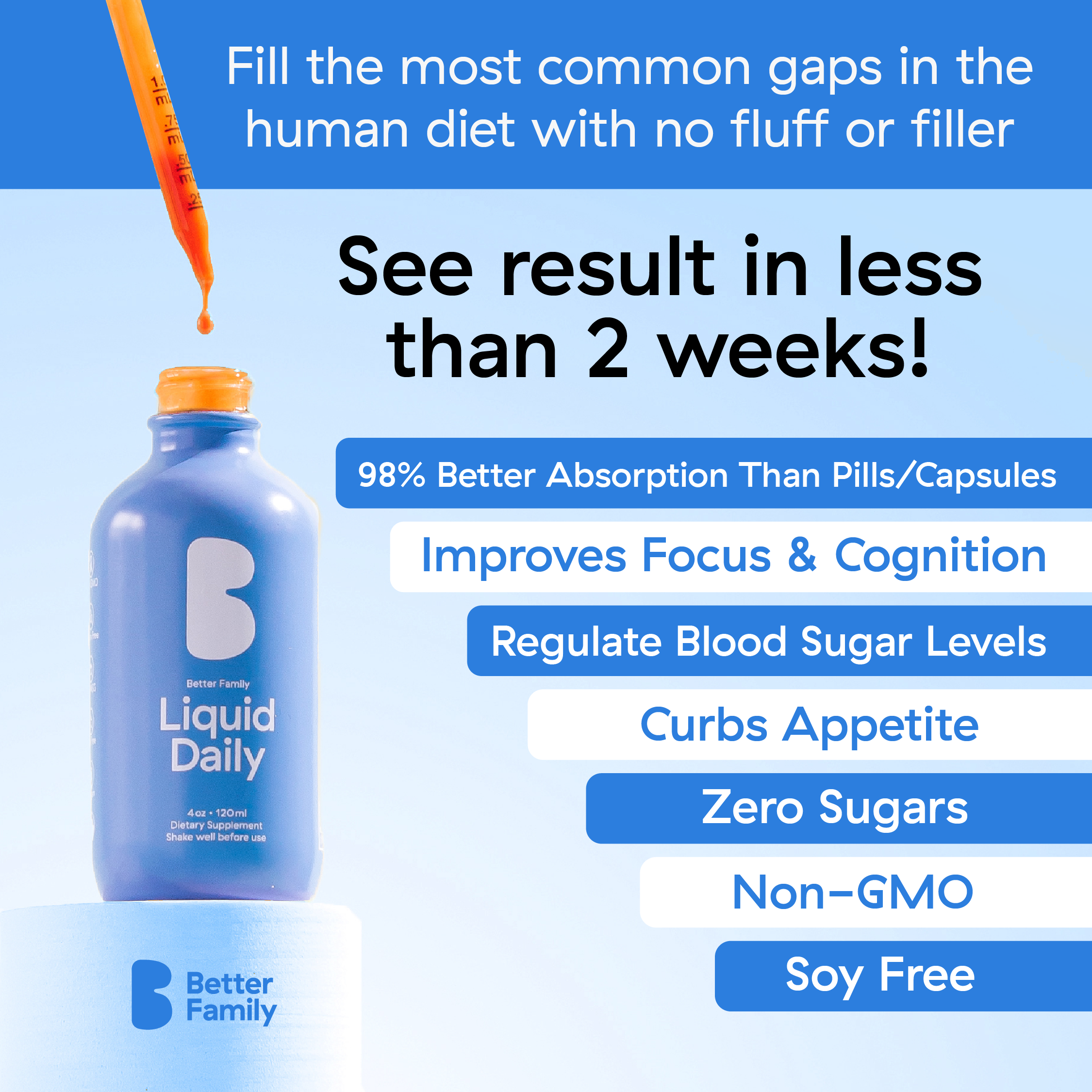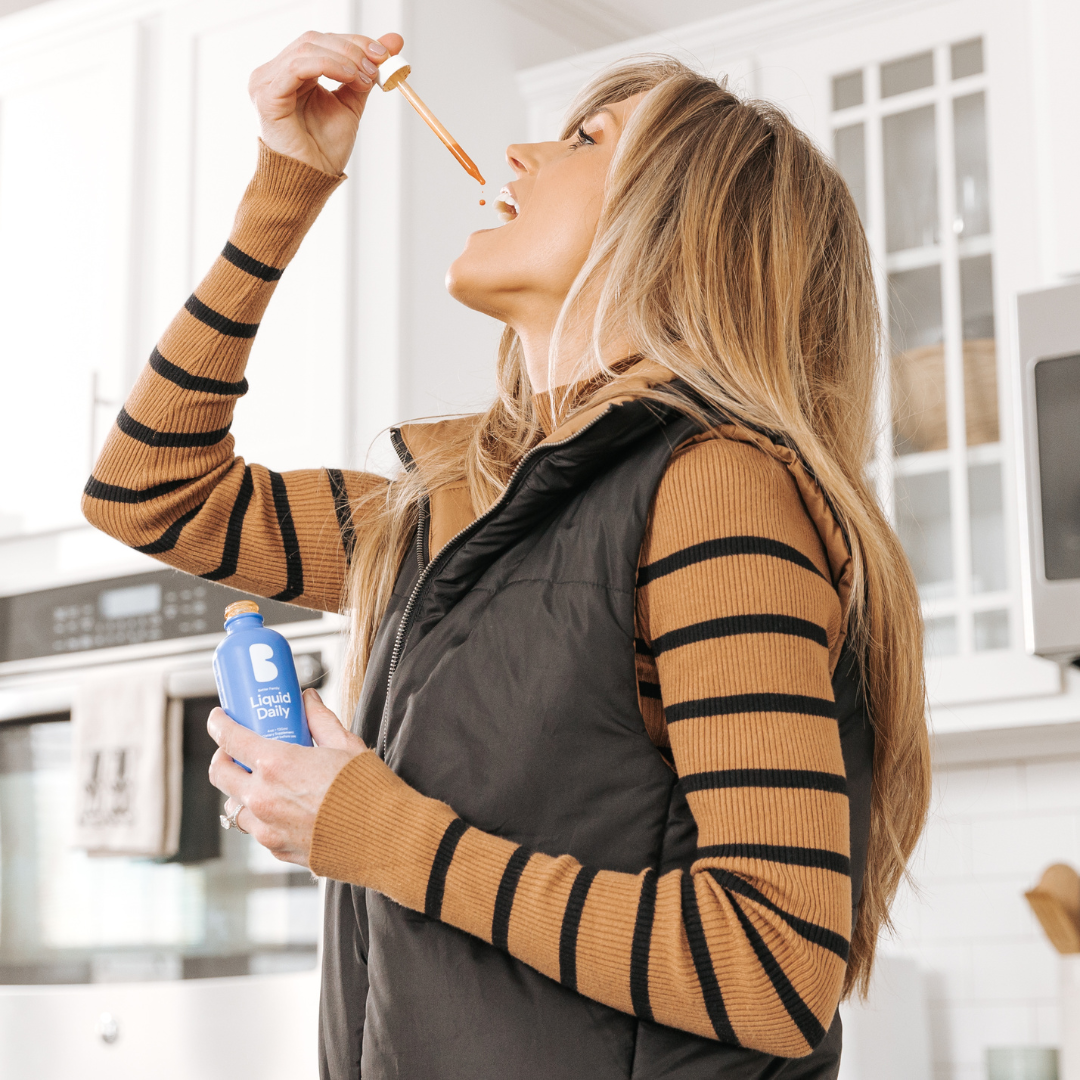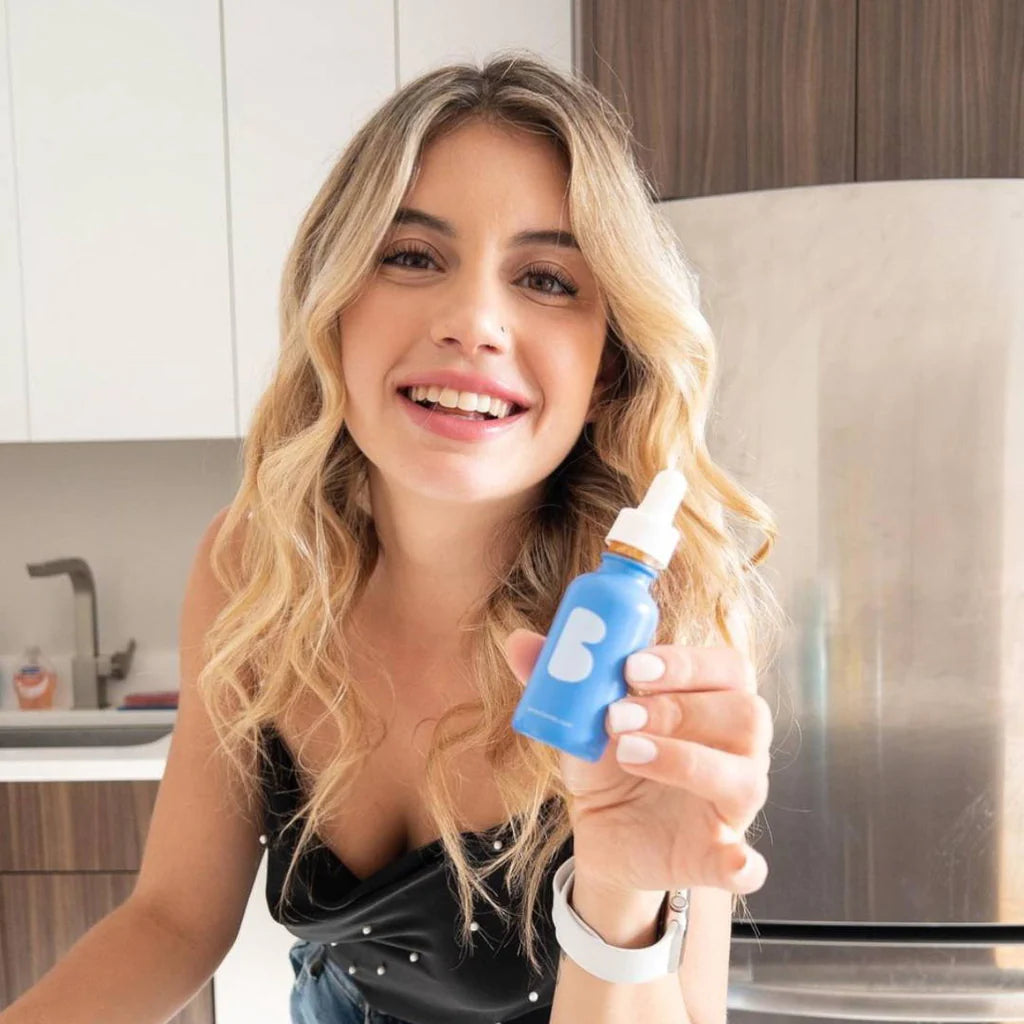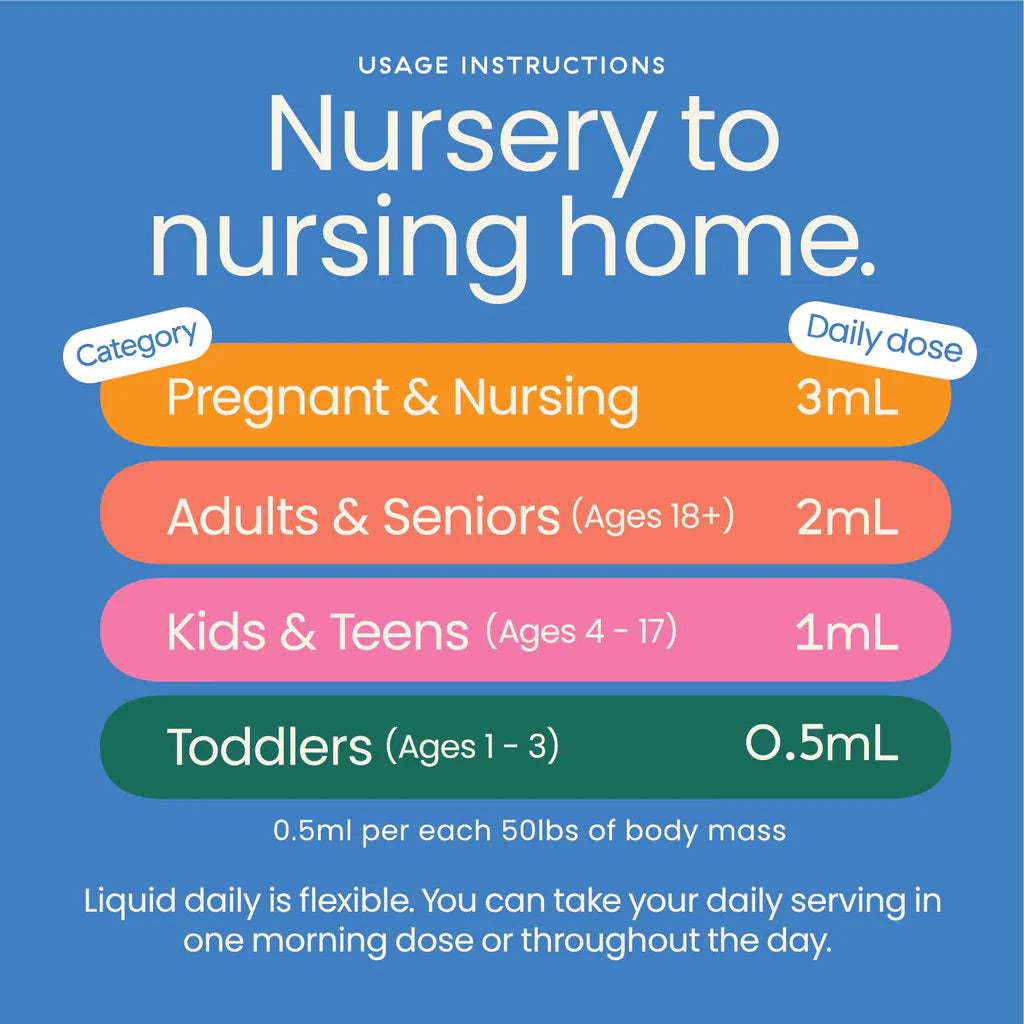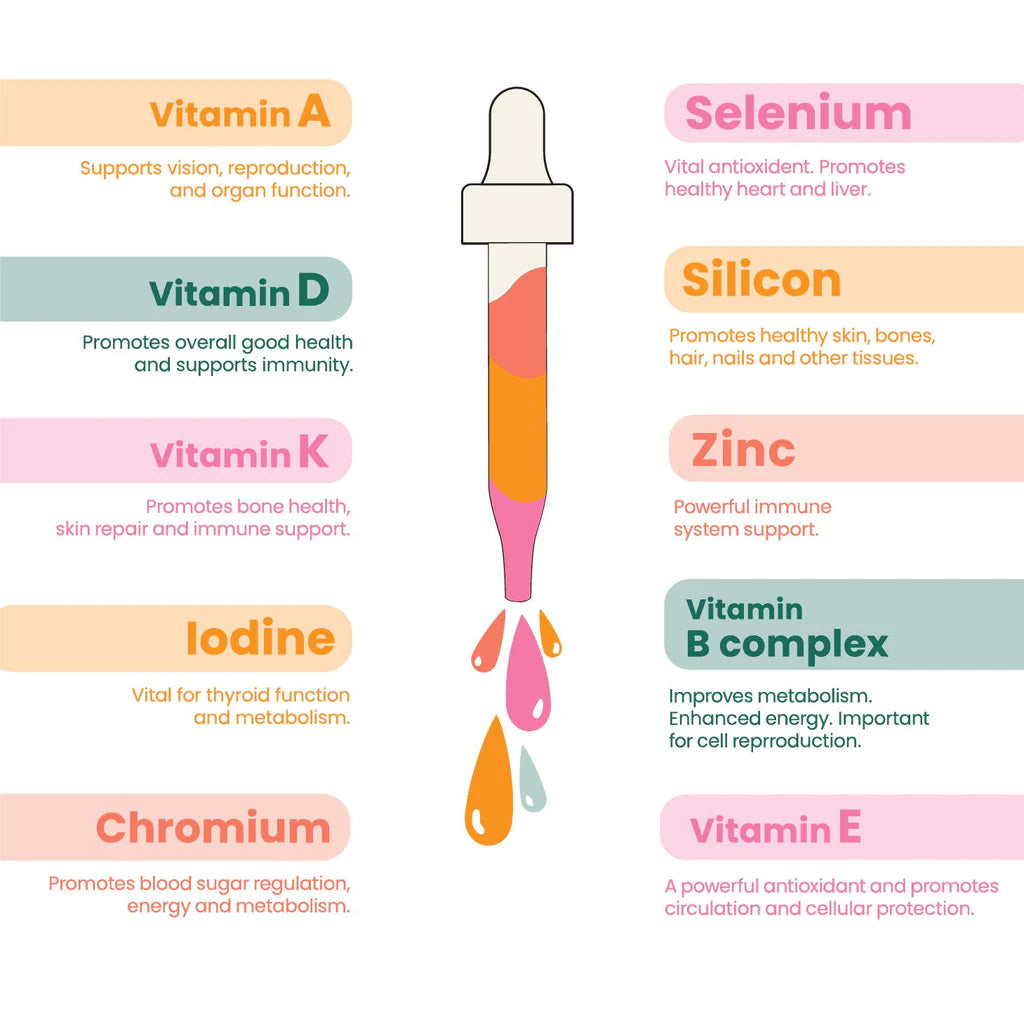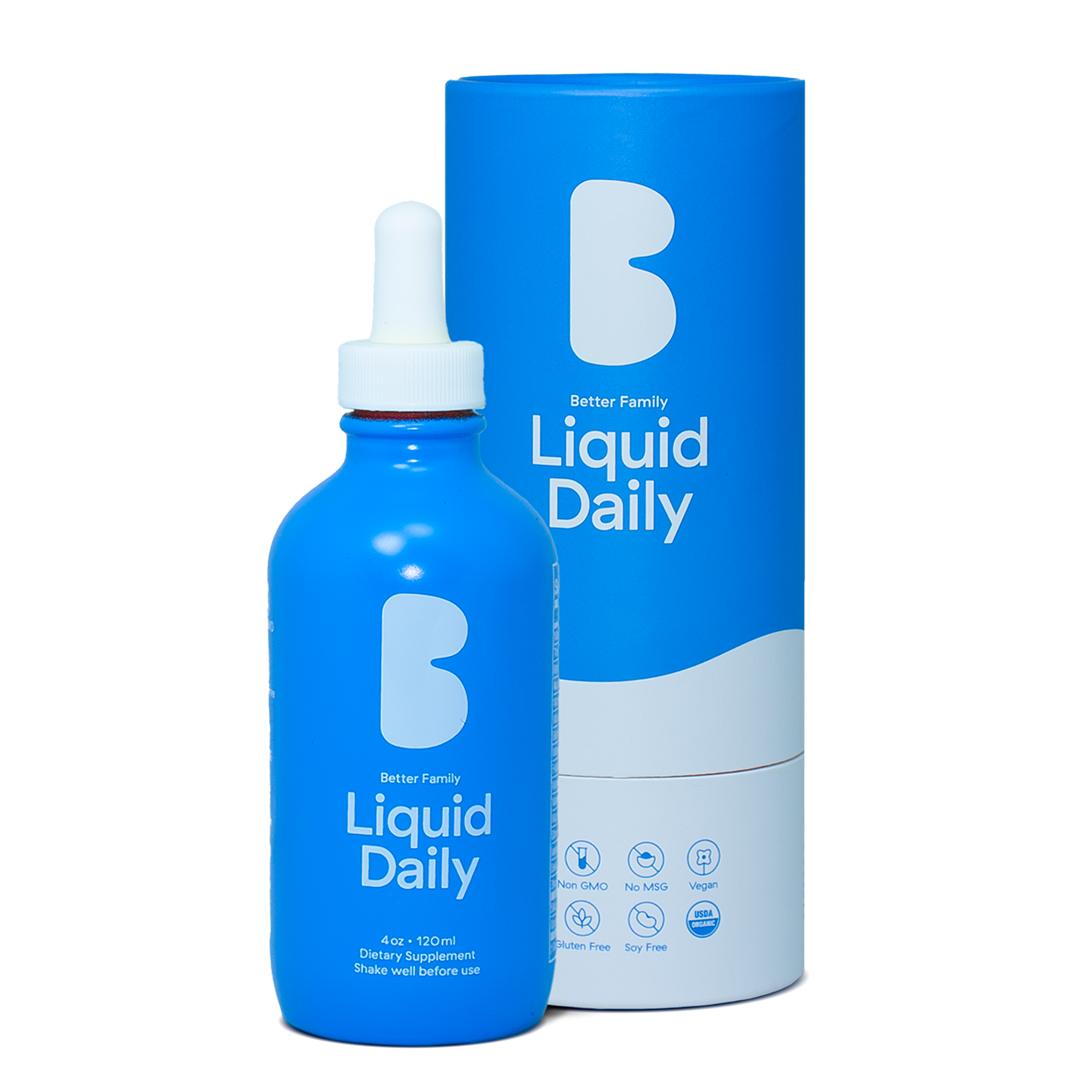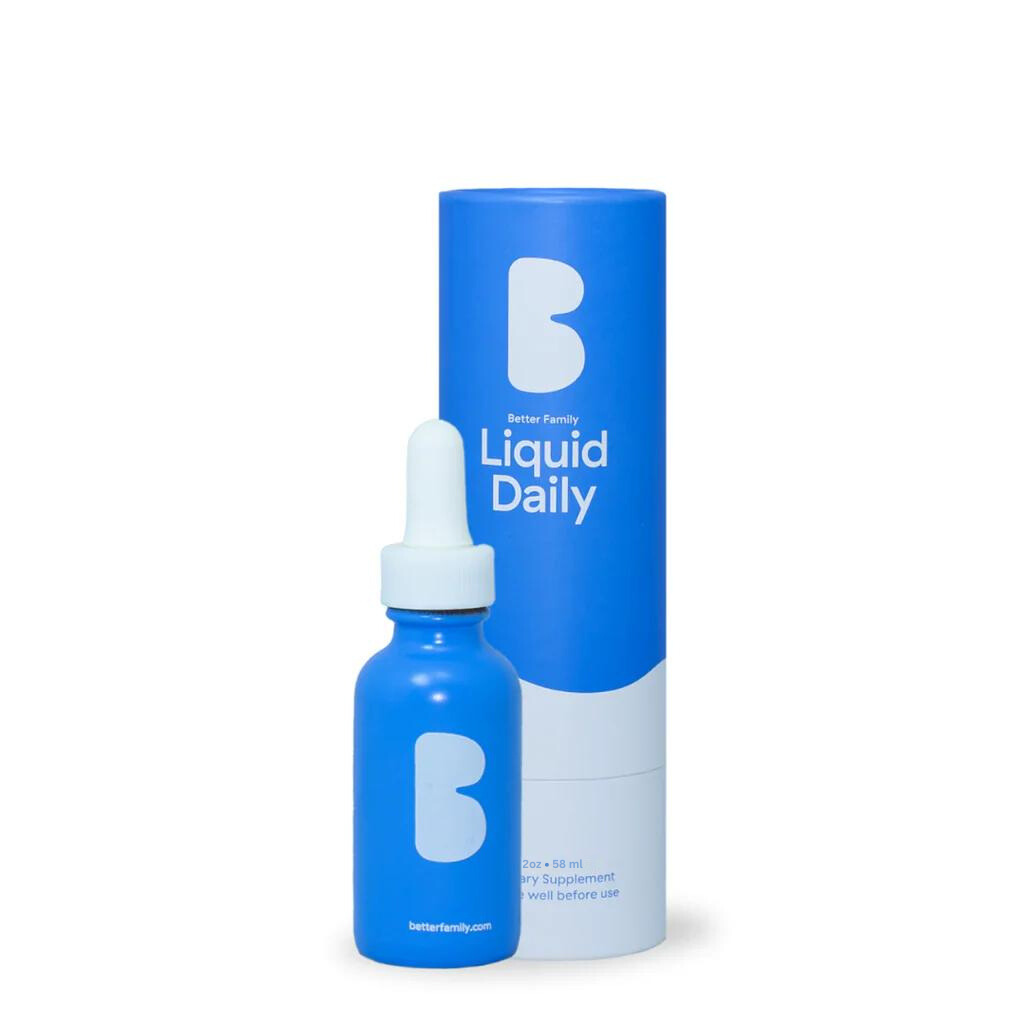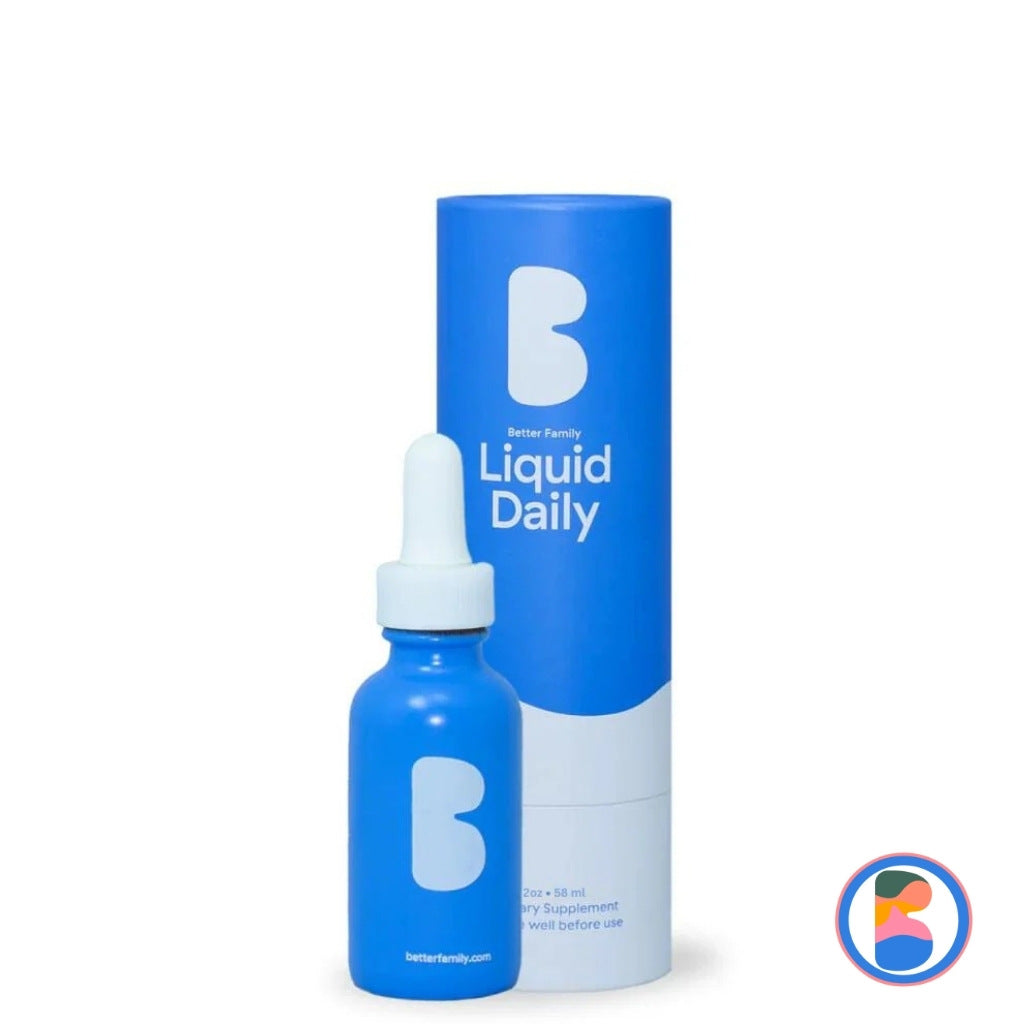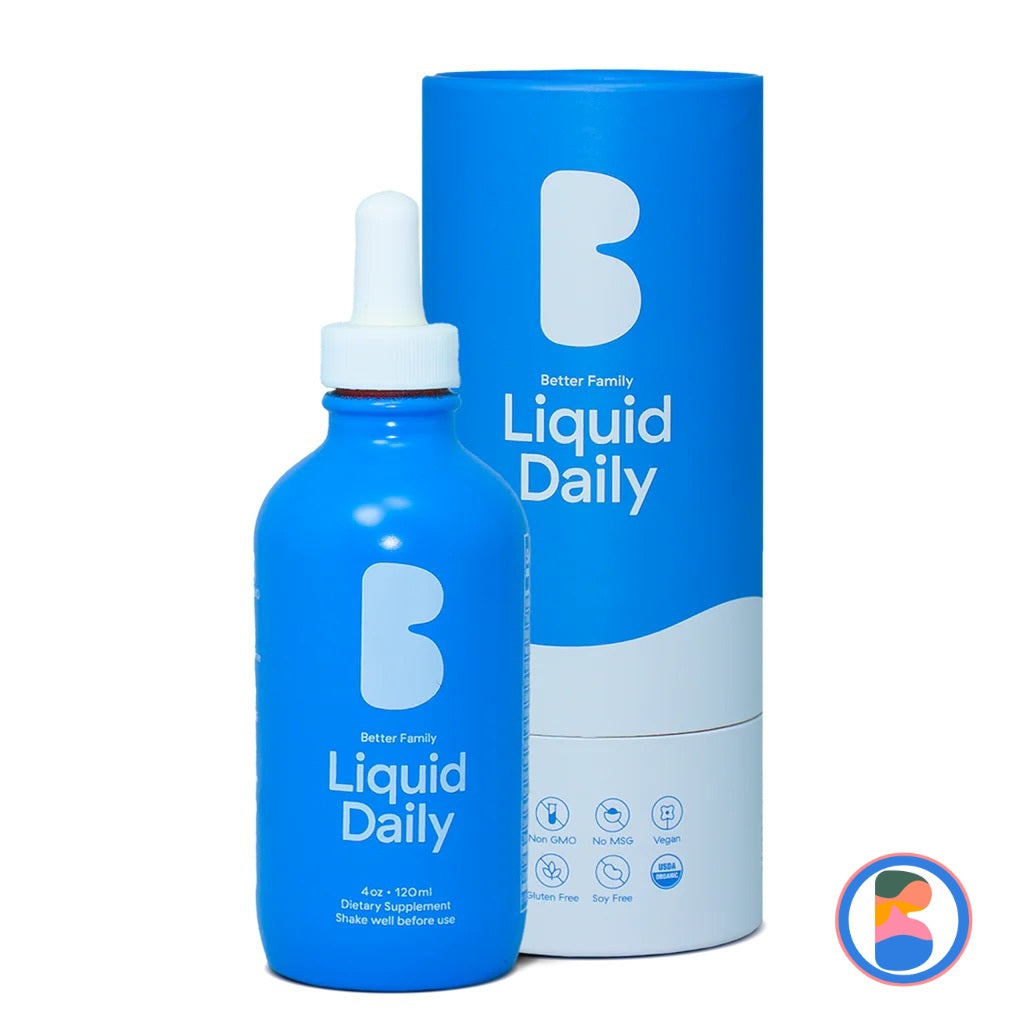Better Family Article Series
Liquid Multivitamins
The Absorption Advantage
This article series is brought to you by the team behind Liquid Daily: the better option for filling nutritional gaps in your household.
Liquid Is Better
Simplify Your Routine
You're In Control

Article Highlights
- Sublingual administration is a method of drug delivery that involves placing a drug directly under the tongue.
- The sublingual route is often preferred over oral administration because it allows the medication to enter the bloodstream directly.
- Liquid Daily, as one of the best liquid multivitamins for adults, provides a balanced combination of vital nutrients that may be lacking in a typical diet.
Sublingual Administration
Sublingual administration is a method of drug delivery that involves placing a drug directly under the tongue. As the name suggests, "sublingual" comes from the Latin words "sub" meaning "under" and "lingua" meaning "tongue". This method offers a rapid onset of action as the medication is rapidly absorbed through the mucous membranes into the bloodstream.
The sublingual route is often preferred over oral administration because it allows the medication to enter the bloodstream directly, bypassing the digestive system. This is beneficial because many drugs can be inactivated or slowed by digestive processes, such as stomach acids, or by the liver's metabolic actions. This direct absorption can lead to a faster onset of effects.
This type of administration can also be easier and more comfortable for patients who have difficulty swallowing pills. It's especially advantageous for medications that may cause stomach upset, as the direct absorption under the tongue prevents the drug from coming into contact with the stomach lining.
A good example of a substance commonly administered sublingually is liquid B12. Vitamin B12, also known as cobalamin, is an essential nutrient that plays a vital role in the production of red blood cells and the functioning of the nervous system. Vitamin B12 deficiency can lead to anemia, fatigue, and neurological problems.
While Vitamin B12 is typically obtained from food sources, some individuals—particularly those following vegan or vegetarian diets, and older adults with decreased absorption—may not receive enough from diet alone and require supplementation. Because the absorption of B12 can be impaired in the gastrointestinal tract, sublingual administration can serve as a more efficient route of administration.
Other liquid vitamins can likewise be administered via the sublingual route. The liquid form offers benefits over solid forms, such as tablets or capsules, due to its easy administration, rapid absorption, and high bioavailability.
"We are loving it - the kids think the taste is great!"
- Amy B.
Start feeling better with Liquid Daily - the liquid multivitamin packed with 18 essential nutrients & vitamins.
TRY LIQUID DAILYHow to Increase Sublingual Absorption
Understanding how to increase sublingual absorption is important for maximizing the effectiveness of medications. One of the main ways to improve absorption is to ensure that the area under the tongue is clean and moist. Before taking medication sublingually, it is a good idea to rinse your mouth with water to remove any food debris.
Another factor that can improve sublingual absorption is the position of the medication under the tongue. It should be placed as far back as comfortable since this area is rich in blood vessels, allowing for quicker absorption.
Those taking medications or supplements should also be aware of how long to hold a sublingual under tongue. The recommended duration usually varies between medications, but a good rule of thumb is to hold the medication under the tongue for at least 1-2 minutes, or until it dissolves or is fully absorbed.
For a typical sublingual tablet, the sublingual absorption time is usually about 1-10 minutes. It's worth noting, however, that a number of factors, such as the state of the oral mucosa, can influence absorption time.
Despite its benefits, there are a few disadvantages of the sublingual route. For instance, it may not be suitable for drugs that have a bitter taste. It's also unsuitable for large tablets or medications that require high doses, as the sublingual space is relatively small.
Buccal vs. Sublingual
Buccal administration and sublingual administration are administration methods that offer an alternative to traditional oral intake where medication is swallowed and absorbed via the digestive system. Understanding buccal vs sublingual administration is vital when starting a new medication or supplement regimen.
The key difference between these methods lies in the location where the medication is placed in the mouth. Sublingual administration involves placing the medication under the tongue. The sublingual area is highly vascularized, which allows the drug to be rapidly absorbed into the bloodstream.
Buccal administration, by contrast, requires placing the medication in the cheek pouch, between the cheek and gum. Compared to the sublingual route, the buccal mucosa is less permeable and has a relatively lower blood flow. As such, buccal absorption tends to be slower, but the medication stays active for a longer period.
Another important difference between buccal and sublingual administration is related to saliva production. For sublingual administration, the drug can be washed away and inadvertently swallowed due to the high amount of saliva production in this area, which might decrease the amount of the drug absorbed and thus its effect.
Try Liquid Daily
Liquid Daily is the all-in-one liquid multivitamin that contains the highest quality formats of the most important vitamins and minerals.
- 18 Essential Vitamins & Minerals
- Advanced Liquid Absorption
- Zero sugars, fillers, or artificial flavorings
- Safe & Effective for Kids & Adults!
Sublingual Administration Advantages and Disadvantages
Sublingual administration advantages and disadvantages should be considered prior to choosing an administration route. Here are some of the key benefits of sublingual administration:
- Rapid Absorption: Sublingual drugs are quickly absorbed into the bloodstream, which allows the medication or supplement to start working faster.
- Avoidance of First-Pass Metabolism: Sublingual administration reduces the chance of drugs being significantly metabolized before it reaches systemic circulation.
- Ease of Administration: Sublingual administration can be easier than other methods. A sublingual tablet or liquid can simply be placed under the tongue until it dissolves.
- Reduced Gastrointestinal Side Effects: Because sublingual medications bypass the stomach and intestines, they're less likely to cause gastrointestinal side effects.
It’s also important to note the downsides of this administration route:
- Limited Drug Suitability: Not all drugs are suitable for sublingual administration. Only drugs that are lipophilic (fat-soluble) and have a low molecular weight can be absorbed effectively through the sublingual route.
- Drug Stability: Some drugs may not be stable in the saliva or may be too quickly metabolized in the mouth, reducing their effectiveness.
- Variable Absorption: The amount of drug absorbed can vary depending on individual factors, including saliva production and the condition of the oral mucosa.
When comparing sublingual vs oral, the best administration route ultimately depends on the specific drug, the patient's condition and preferences, and the desired therapeutic outcome.
Sublingual Administration Example
Sublingual administration can be used in several ways across various therapeutic categories. A good sublingual administration example is nitroglycerin, a medication used to treat and prevent angina pectoris (chest pain caused by heart disease). A nitroglycerin tablet or spray administered sublingually allows for quick absorption into the bloodstream, providing quick relief from chest pain.
Another well-known sublingual example is the use of buprenorphine for the treatment of opioid dependence. Buprenorphine helps reduce cravings and withdrawal symptoms in individuals addicted to opioids. When administered sublingually, the drug is more effective.
Sublingual immunotherapy (SLIT) is a method used to treat allergies. Allergy drops or tablets are placed under the tongue and contain small amounts of the allergen. Over time, this can help build the body's tolerance to the allergen and reduce allergic reactions. SLIT is often used for seasonal allergies, dust mite allergies, and grass allergies.
Liquid multivitamins can also be administered sublingually. These are typically dropped or sprayed under the tongue and held there for a minute or two for absorption. Sublingual vitamins B12, D, and B-complex are quite common, but comprehensive liquid multivitamins are also available.
"I absolutely love this stuff!! It’s amazing and works great!!"
- Teresa H.
Try the lightly and naturally flavored liquid multivitamin - the perfect blend of essential nutrients, including methylfolate.
TRY LIQUID DAILYTips For Incorporating Sublingual Administration Into Your Routine
Getting started with the sublingual route can be tricky if you’ve utilized traditional methods all your life. Here are some tips for a smooth transition:
- Proper Timing: Schedule your sublingual medication around your meals. Avoid eating or drinking until the medication has been fully absorbed to avoid inadvertently swallowing the medication.
- Correct Positioning: Place the medication under the tongue, as far back as is comfortable. This area enables quick absorption, as it’s home to a lot of blood vessels.
- Make it Routine: Try to take your medication at the same time each day. This not only helps you remember to take it, but can also improve its effectiveness.
- Communicate with Your Healthcare Provider: Always keep an open line of communication with your healthcare provider. If you have any issues with sublingual administration, such as irritation or discomfort under the tongue, let them know.
- Store Properly: Store your medication as directed by your pharmacist or the label on the packaging. Some sublingual medications may need specific storage conditions, like a cool, dry place away from sunlight.
Be sure to follow the specific instructions given by your healthcare provider or pharmacist for each medication. These general tips can be useful, but individual instructions may vary based on the medication and your health condition.
The Future of the Sublingual Route
Sublingual administration, while not a new concept, continues to gain traction as an alternative to traditional oral administration, especially for medications that benefit from rapid absorption or avoiding the first-pass metabolism. Looking to the future, there are promising advancements that could make sublingual administration an even more attractive option.
Research and development efforts are underway to enhance drug formulations for sublingual use. They aim to improve drug stability, absorption rates, and patient experience. Innovations like nanoparticle technology, thin film strips, and advanced emulsification techniques are opening doors to a wider range of medications that could be administered sublingually.
What’s more, the trend towards personalized medicine and patient-centered care aligns well with sublingual administration. This method offers advantages such as ease of use and the potential for self-administration, all of which can contribute to better patient compliance and overall outcomes.
Better Family is helping lead the way in efficient absorption. Our Liquid Daily Multivitamin offers 60-70% better nutrient absorption when compared to traditional vitamins. It can be taken sublingually and includes a skin and hair care product to maximize health.
More articles from Better Family


